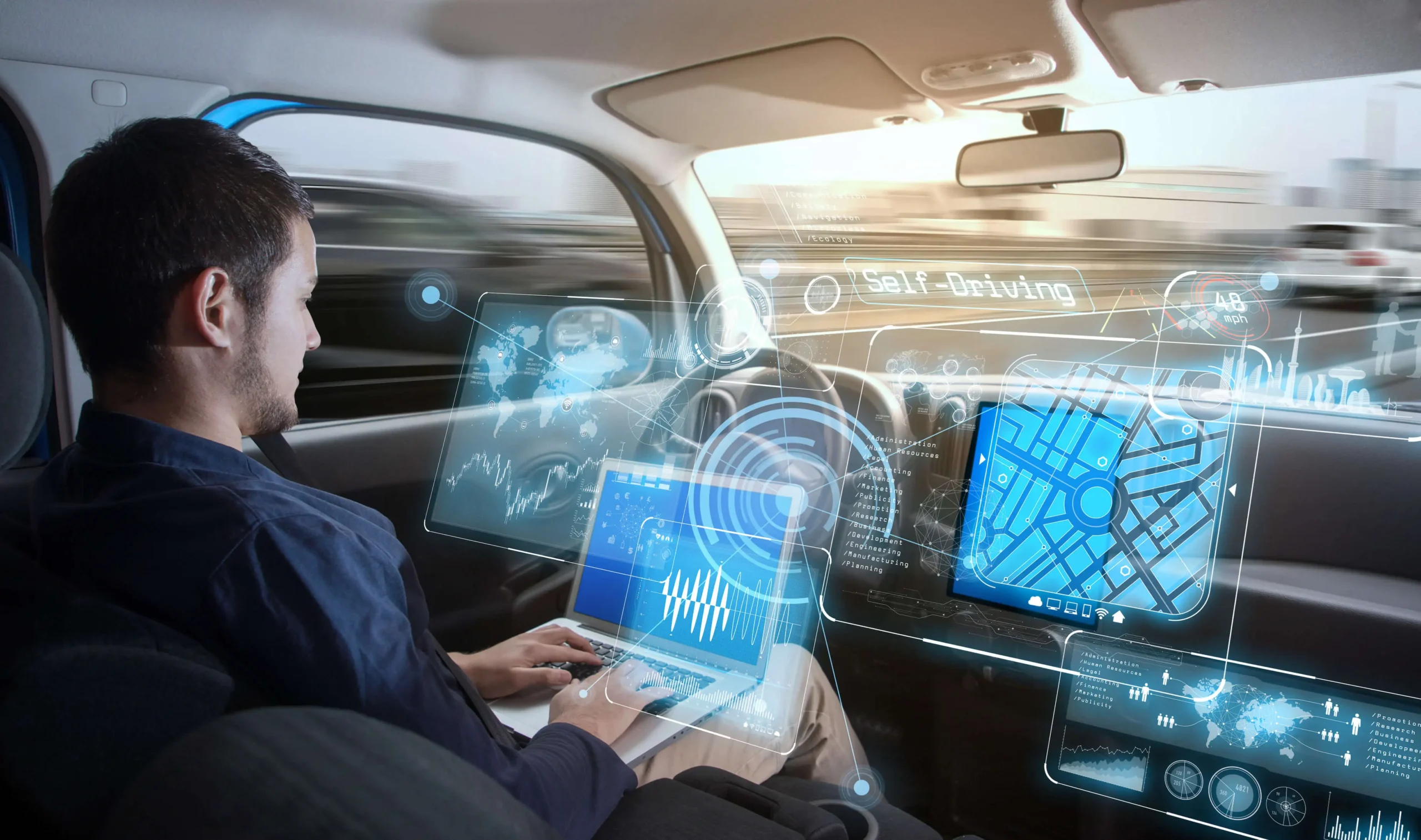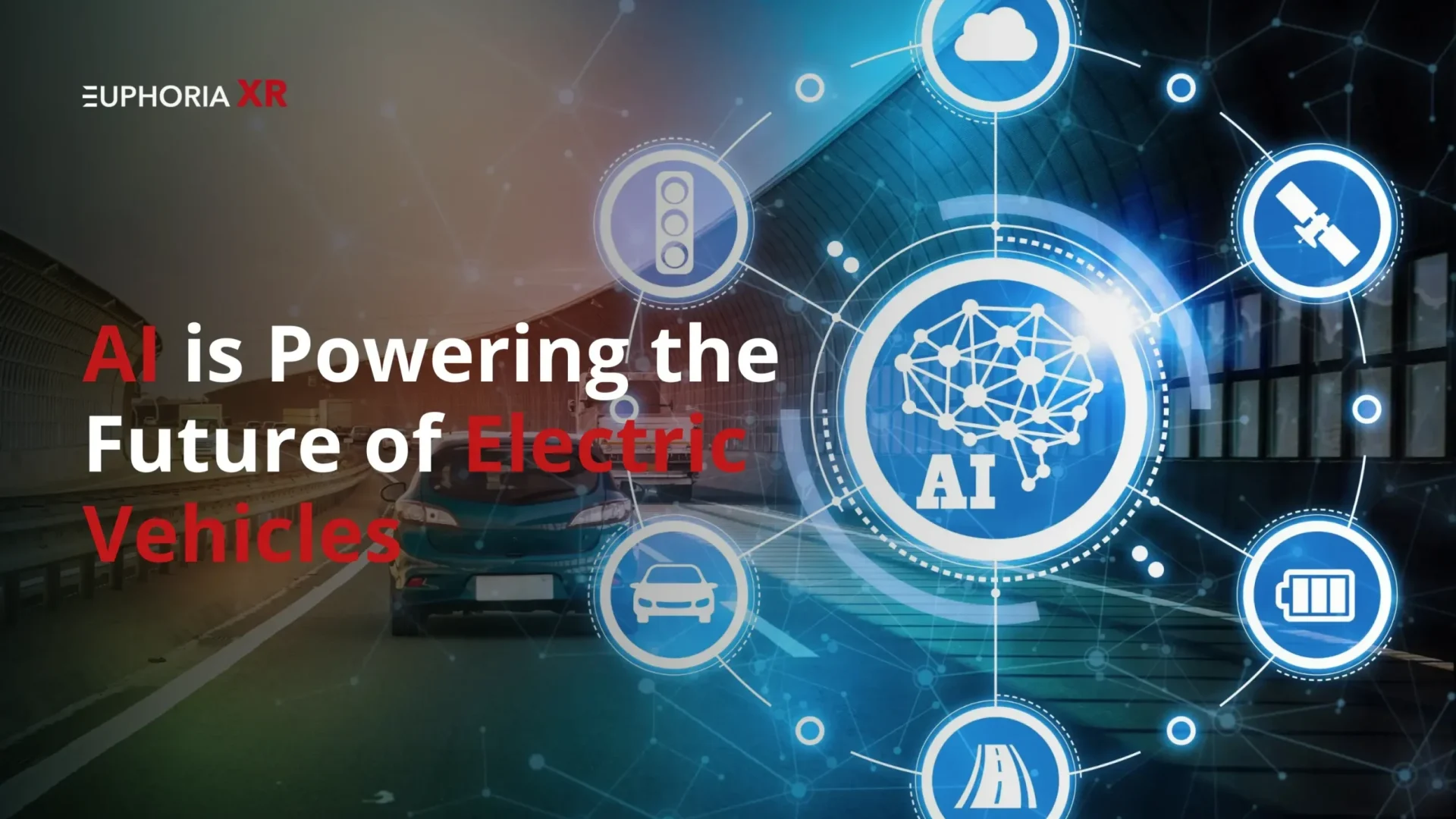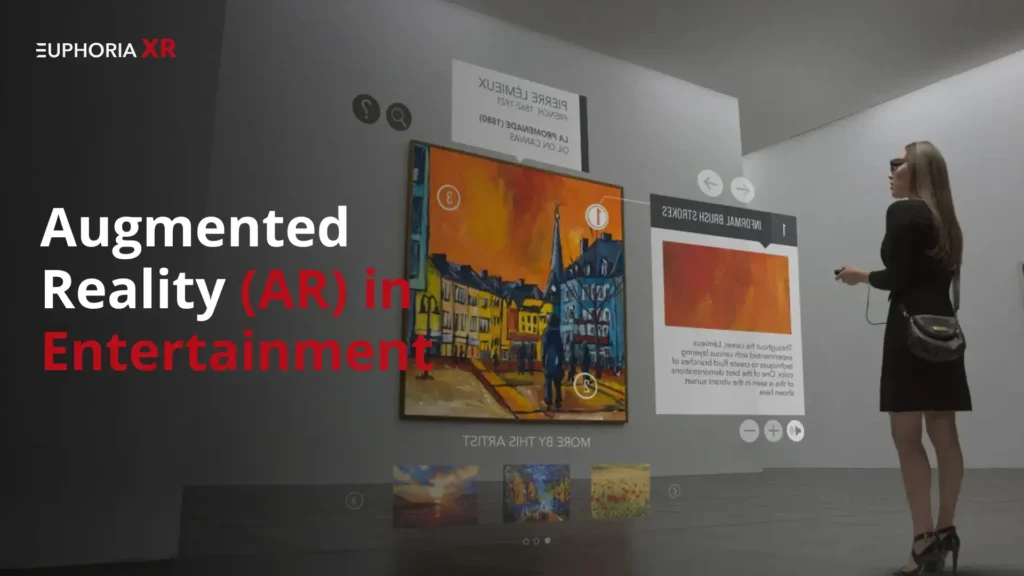What if your car could think, learn, and decide just as you do?
The utilization of AI in Electric Vehicles is not far away; it is already here.
As of 2024, over 55% of new electric vehicles will come equipped with some element of Artificial Intelligence, smart navigation to predictive maintenance, and semi-autonomous driving (Source: McKinsey & Company). What is changing is the entire paradigm of driving, conserving energy, and ensuring safety while on the road.
This post will explore how AI is changing the face of electric vehicles-making them increasingly smarter, safer, and more efficient.
How AI Is Transforming Electric Vehicles

Electric Vehicles were once considered clean energy appliances with lesser fuel costs, but now, thanks to Artificial Intelligence (AI), they are much more.’
AI is the brainy, intelligent soul of your EV. It enables your car to:
Decide more responsibly while driving
Save maximum energy
Opt for charging times
And sometimes, it can drive itself.
Statista’s 2023 report confirms that AI has a growing presence on the automobile stage; by 2030, the global market for AI in Electric Vehicles will exceed $15 billion.
So when we say AI is changing EVs, we refer to improvements that extend to the whole production process and the rider’s experience. Ready to hire an AI Developer to make Customized AI Development solutions.
AI in the Electric Vehicle Industry – A Brief Overview
Let’s take a brief moment to state the obvious.
The electric vehicle industry is big. But alongside things getting bigger, with increasing EVs on the road, challenges are born: How do we improve range? How to charge them faster? How to ensure safety?
A perfect opportunity for AI.
It is applied across the board to:
Predict battery health and avert breakdowns
Assists with autonomous driving, as with Tesla’s Full Self-Driving
Personalize the driving experience
Create and streamline the manufacturing process.
Whether in vehicle software, charging infrastructure, or manufacturing systems, AI is charting a course on how electric vehicles are produced and driven.
Therefore, AI is no longer optional for electric vehicles is now indispensable!
Is your tech stack ready for AI-enterprise vehicles?
We will help you to get there, so Contact Us now to explore all possibilities.
Understanding Autonomous Electric Vehicles
Once considered a figment of the imagination, self-driving cars have quickly come into practice as a result of artificial intelligence in electric vehicles.
It’s that AI power that enables electric cars to achieve:
Comprehension of surroundings
Lightning-speed decisions
Moving safely from point A to point B without human help.
Most EVs are very much at Level 2 autonomy already in that they use AI for steering and speed, yet keeping the driver still required, according to the Society of Automotive Engineers (SAE). Tesla, Waymo, and GM’s Cruise are well on their way to developing full autonomy, with driving mainly relying on AI.
AI-Powered Perception Systems
The perception systems operate as the elements through which the vehicle both views its surroundings and hears the environment. AI sensors, which include cameras along with radar, lidar, enable the system to obtain perceptual data regarding cars as well as people and traffic signs, and road conditions.
The system takes real-time input from all its sensors to generate assessments about safety zones and reactions.
Waymo uses its AI to monitor data fed by more than twenty sensors in parallel so the vehicle can identify barriers even when weather conditions are unfavorable.
Decision-Making and Control
The vehicle requires an instant response after detecting the environmental elements. The entrance of AI decision-making algorithms provides solutions in this instance. The controls for acceleration, braking, turning, and several other functions operate in incredibly short intervals.
Through continuous learning from thousands of driving situations, AI continually improves its performance choices for the future. The AI system operating in your EV improves its performance through continuous exposure to driving situations.
Enhanced Safety Features
Safety is where AI shows its worth in electrifying vehicles.
Predictive Collision Detection
Blind Spot Warnings for Drivers
It automatically brakes when an object is too close.
According to a 2022 study by MIT, AI-enabled electric cars and trucks can decrease rear-end collisions by as much as 38%. It’s not just intelligent; it’s life-saving.
Using AI to Perfect EV Battery Chemistry
Batteries are the heart of electric vehicles, but building the perfect one is a tremendous puzzle.
Artificial Intelligence accelerates battery research by carrying out tests of millions of chemical combinations in a virtual lab, compressing years of work into weeks.
Researchers at Stanford University have utilized machine learning to reduce battery testing time by 98%, thus facilitating the creation of batteries with longer life and quicker charging times.
Thanks to AI, future EVs will be faster in charging, able to travel farther, and have longer lifespans.
Improving Efficiency and Energy Management Using AI in Electric Vehicles
Power is one thing, but it is more important for an EV to use that power wisely, with AI being a crucial factor in its development.
Here’s what AI in an electric vehicle can do:
Understand your driving patterns and ration power accordingly
Forecast energy demand via traffic and inclination
Optimize energy transfer in the vehicle
McKinsey & Company claims that smart AI energy management increases EV efficiency by 30%, meaning more miles per charge and fewer visits to the plug.
Simply put: AI helps your EV think ahead, so you don’t have to.
Need help operationalizing the data for smarter vehicular decision-making?
Set Up a Quick Call with our AI experts today.
Smart Charging and Infrastructure Optimization
To charge your electric automotive requires more than hooking up the cable. AI in electric vehicles operates charging systems to become efficient electricity management while improving speed and performance for both individual vehicles and the wider power grid.
AI operates charging stations through the analysis of time-related and place-based and usage data, thereby determining charge station needs. Artificial intelligence functions as a guide to find suitable opportunities for car charging through times when rates are cheaper or energy sources are cleaner. A control issue emerges when many people choose 6 p.m. to charge their EVs. The implementation of AI allows it to spread out power usage evenly, thus optimizing operations for both electric vehicle drivers and grid management systems.
The implementation of artificial intelligence in charging systems delivers insights that help metropolitan areas design their infrastructure. The technology detects both the charging location needs and maintenance outlooks ahead of time to prevent potential issues from occurring.
Facilitating Smart EV Charging
The artificial intelligence of your car considers events occurring after you leave it behind for an entire day. Through its recommendation system, the EV charges you at optimal times for discounted rates and during periods when renewable energy sources are available. You can schedule EV charging using your phone through AI-powered applications that learn your regular activities and routines.
The charging software from Tesla employs learning capabilities to recognize the standard driving habits of its users. Charging your electric vehicle at night before a morning road trip enables the battery to adopt its full capacity just as you need it.
Optimizing Key EV Systems
The functioning of AI within vehicles remains unseen to operators because it operates silently to optimize all internal components. The vehicle regulates power distribution and energy reuse through constant AI adjustments to optimize efficiency.
Your situation includes driving an uphill slope while stuck in congestion and having the air conditioner activated. AI processes all established factors and creates instant decisions that optimize your performance with minimal power consumption. Your vehicle’s AI uses daily experience to recognize your personal driving preferences and driving behavior to improve daily performance and efficiency.
The coordinated management capabilities of AI over complete vehicle systems provide electric vehicles with an extensive performance advantage because AI regulates all components as a unified system.
Beyond the Battery – In-Cabin AI and UX
The application field of AI extends beyond the powertrain components and battery systems. Your personal driving experience with your EV will be enhanced through technology that provides comfort alongside improved enjoyment.
Your EV already knows your preferences when you enter because its advanced system sets the seat position and temperature and selects your song playlist. AI obtains this information from your use and then adjusts its functions throughout continued usage. Through AI technology, the BMW iX and Mercedes EQ series vehicles enable users to experience hassle-free driving due to their ability to learn individual preferences.
Creating a comfortable experience serves as only one purpose among others. Voice control enables you to instruct your automotive product to find the closest charging station while playing relaxing music through simple verbal commands. The vehicle functions as your assistant as it acquires better serving abilities throughout your trips.
Delivering Personalized In-Cabin Experiences
But think of AI as your co-pilot. It knows when one is stressed, cold, or tired because it has picked up on the little things. So applying when it detects discomfort, it will modify the cabin temperature or dim the lighting in the case of driving at a later time. There are even some systems that can tell if you are drowsy and give you a gentle nudge to snap back to reality.
This is not guesswork at all, not by a long shot. Artificial intelligence relies on data culled through facial recognition and sensor detection combined with prediction from past behavior to make every ride from now on just right for you. It learns the more you drive, so the smarter it becomes.
Over-the-Air Updates and Continuous Improvement
Just like your smartphone needs software updates from time to time, today’s next-gen electric vehicle boasts modern over-the-air (OTA) updates powered by AI, which add features, fix bugs, and improve performance.
A good example is how Tesla OTA delivered new features such as enhanced autopilot and new entertainment. You buy electric vehicles, and even after paying for them, AI keeps improving your vehicle. It learns, improves, and adapts without visiting a service center.
It also secures the vehicles. Once a new threat or software vulnerability is detected, AI systems can quickly respond by pushing a patch to all vehicles on the road. It’s not an effort but progress continuously powered by code.
The AI Revolution in EV Manufacturing
The production process uses artificial intelligence, which extends beyond operating inside vehicles to transform entire vehicle manufacturing operations. The implementation of AI systems provides full monitoring capability to factory assembly lines as part of EV production. The technology detects problems in the present time and determines future equipment breakdowns and controls manufacturing processes effectively.
The BMW smart factories show one example. Through its AI detection capabilities, the systems identify tiny scratches on panels together with minor assembly misalignments that humans usually cannot detect. The result of this advancement produces improved vehicle quality alongside streamlined production periods.
The management of logistics processes receives assistance from Artificial Intelligence technologies. The system predicts early both the needed components and their required delivery times, thus minimizing stockouts and material waste. Electric vehicle demand worldwide demands this kind of smart automation because it is essential to maintain manufacturing speed.
Better electric cars emerge from production at an accelerated pace through AI implementation, which results in fewer errors and waste throughout the manufacturing process. A peaceful transformation exists that manifests significant strength.
Ethical Considerations and Industry Challenges For AI in Electric Vehicles
The intelligence level of AI remains supreme, but its operation maintains intricate qualities.
The responsible party for a driving accident involving an autonomous EV remains unknown. All the information your vehicle records about you exists where exactly? The development of machines in factories might lead to numerous job losses.
A series of essential inquiries involving automakers and tech companies, and governments currently require answers. The development of AI applications for electric vehicles depends on creating technology that demonstrates power while maintaining responsibility.
How Data Annotation Powers AI in EVs
AI cannot learn without examples. Data annotation becomes essential at this point because of its crucial role in the development process.
Human workers annotate large numbers of road imagery, including stop signs and traffic lights, as well as pedestrians, to teach AI vehicle safety recognition. Your EV depends on this process to understand driving behaviors connected to human performance.
Every intelligent vehicle works with training data that demonstrates extraordinary intelligence.
Need AI solutions that scale for battery, charging, or user experience?
Begin with our custom AI Development Services.
The Future of AI in Electric Vehicles
Smarter charging. Driverless highways. The new generation of vehicles will engage in conversations with traffic signal controls.
AI technology for electric vehicles will accomplish effortless and sustainable driving through its upcoming innovations. Autonomous vehicular fleets, together with self-directed energy consumption, will join vehicles that perform software updates wirelessly without human intervention.
The future is not just electric. It’s intelligent.
Conclusion
Driving Forward: AI’s Role in the EV Revolution
Once it was EVs that saved fuel, now they are more focused on making decisions.
From safety to sustainability, AI is the driver that makes the difference. It is not only what powers your car; it makes it more intelligent every mile you go.
And there are still so many more changes to come.















